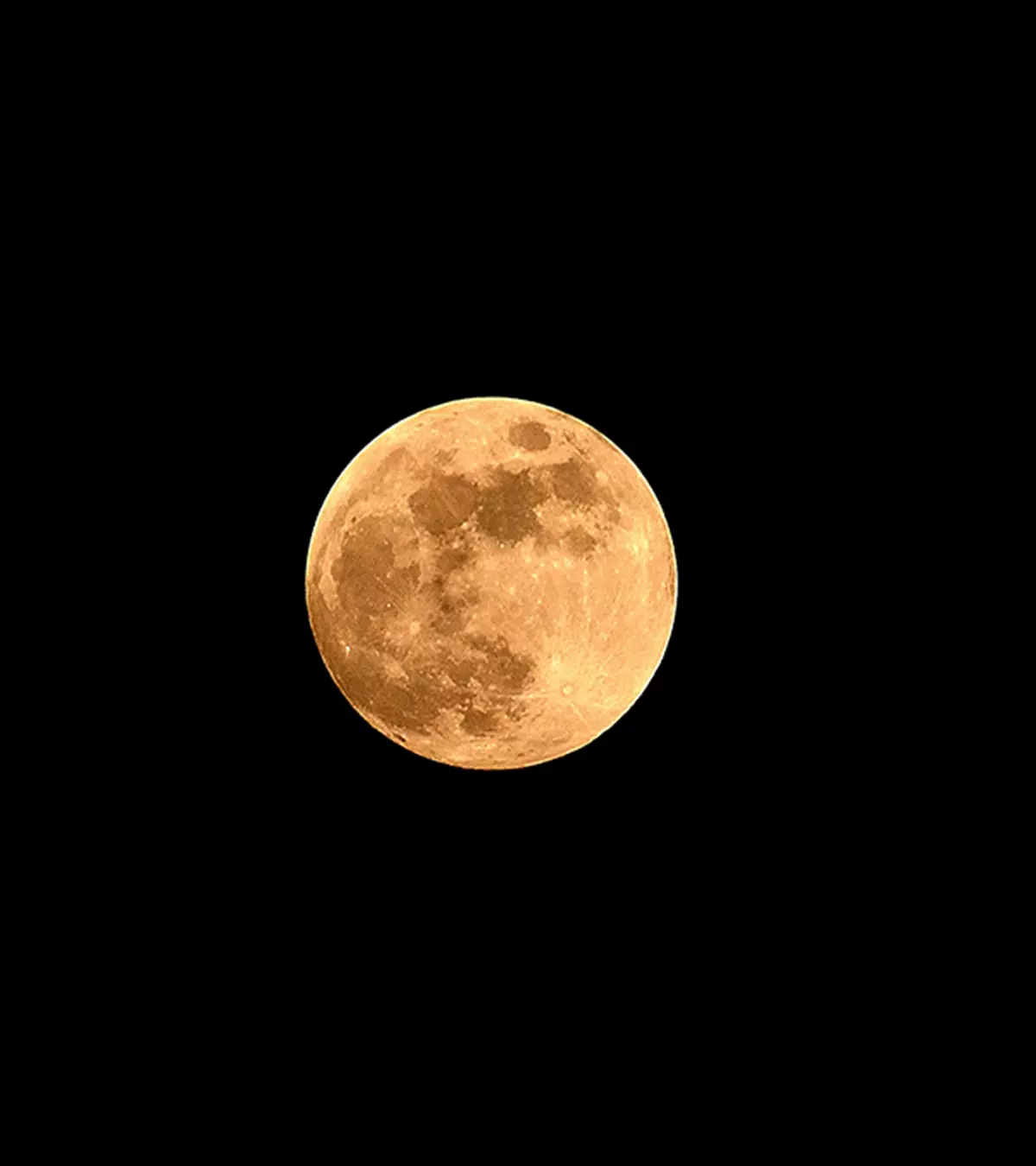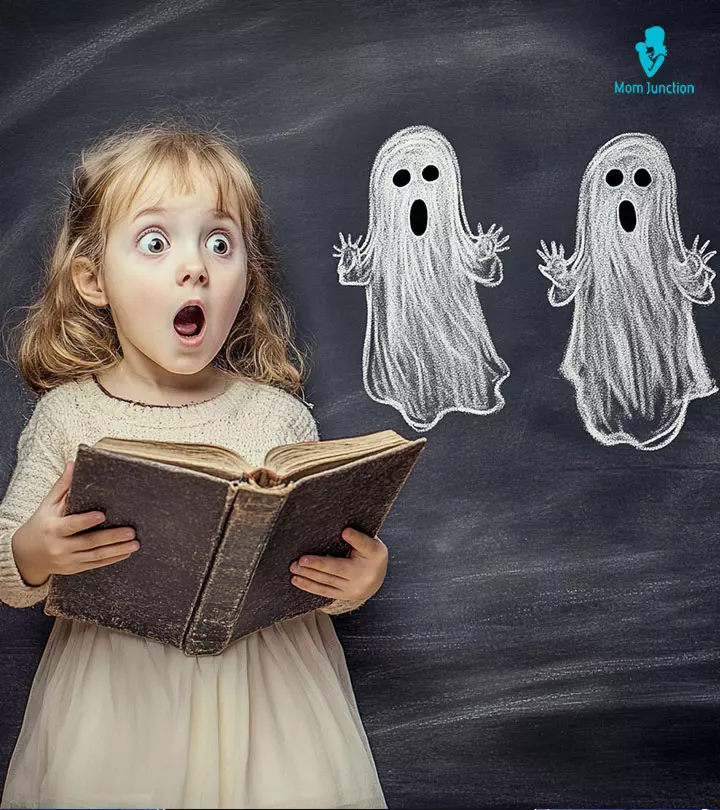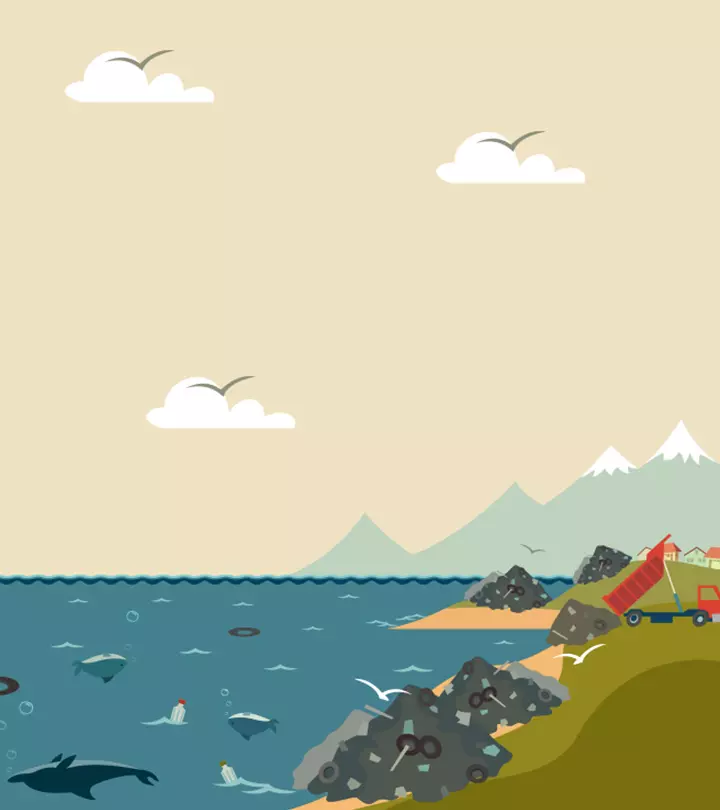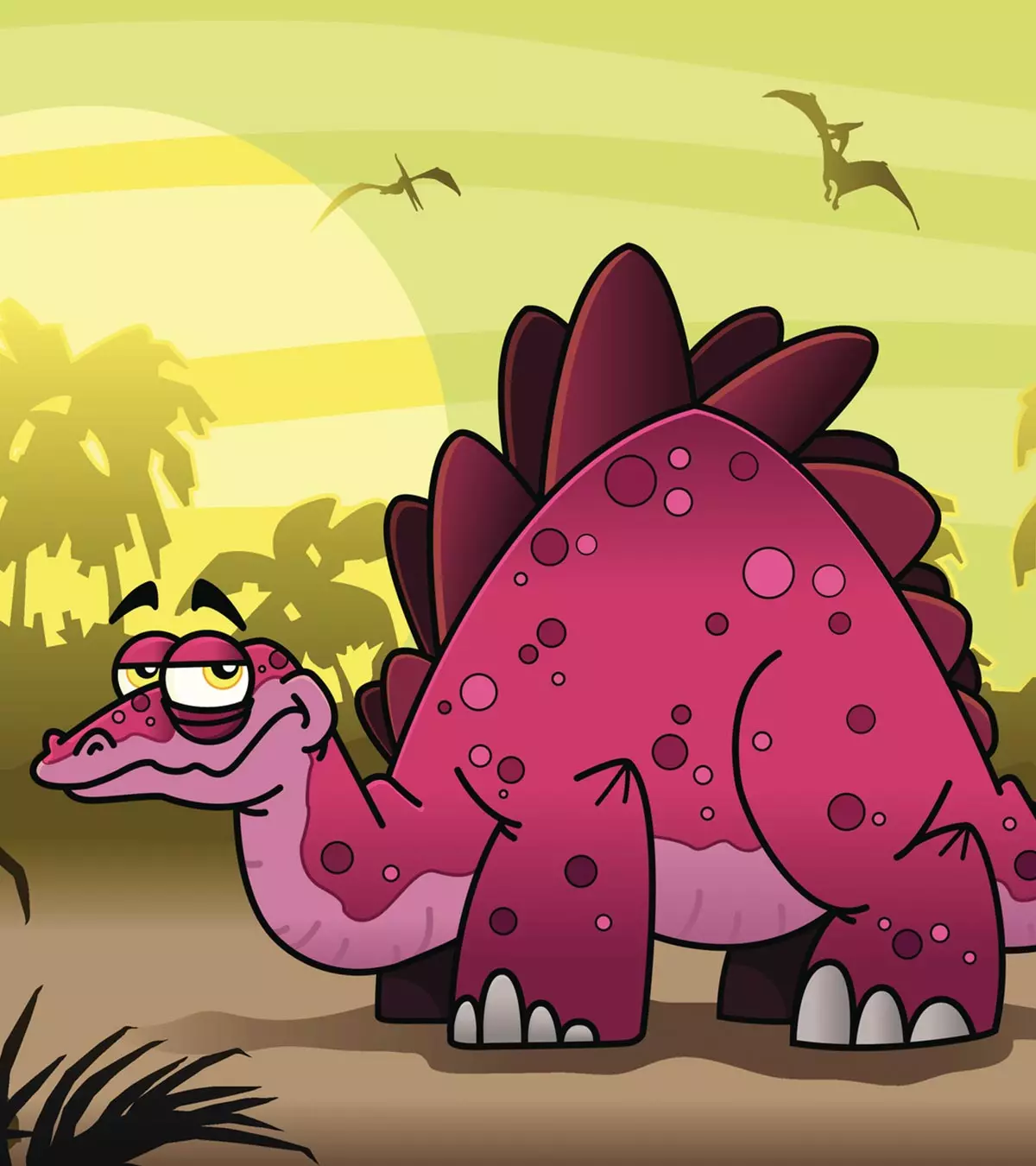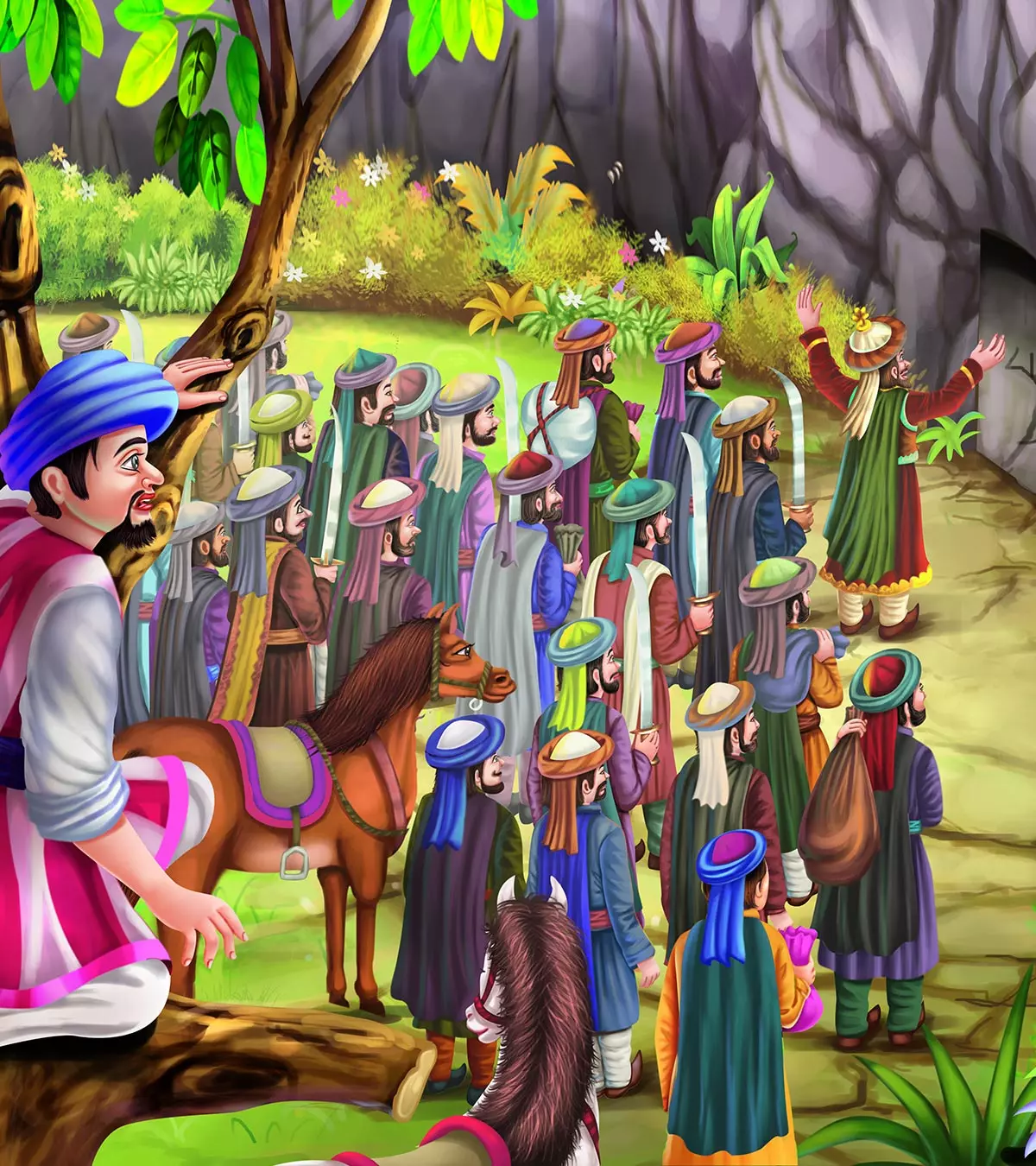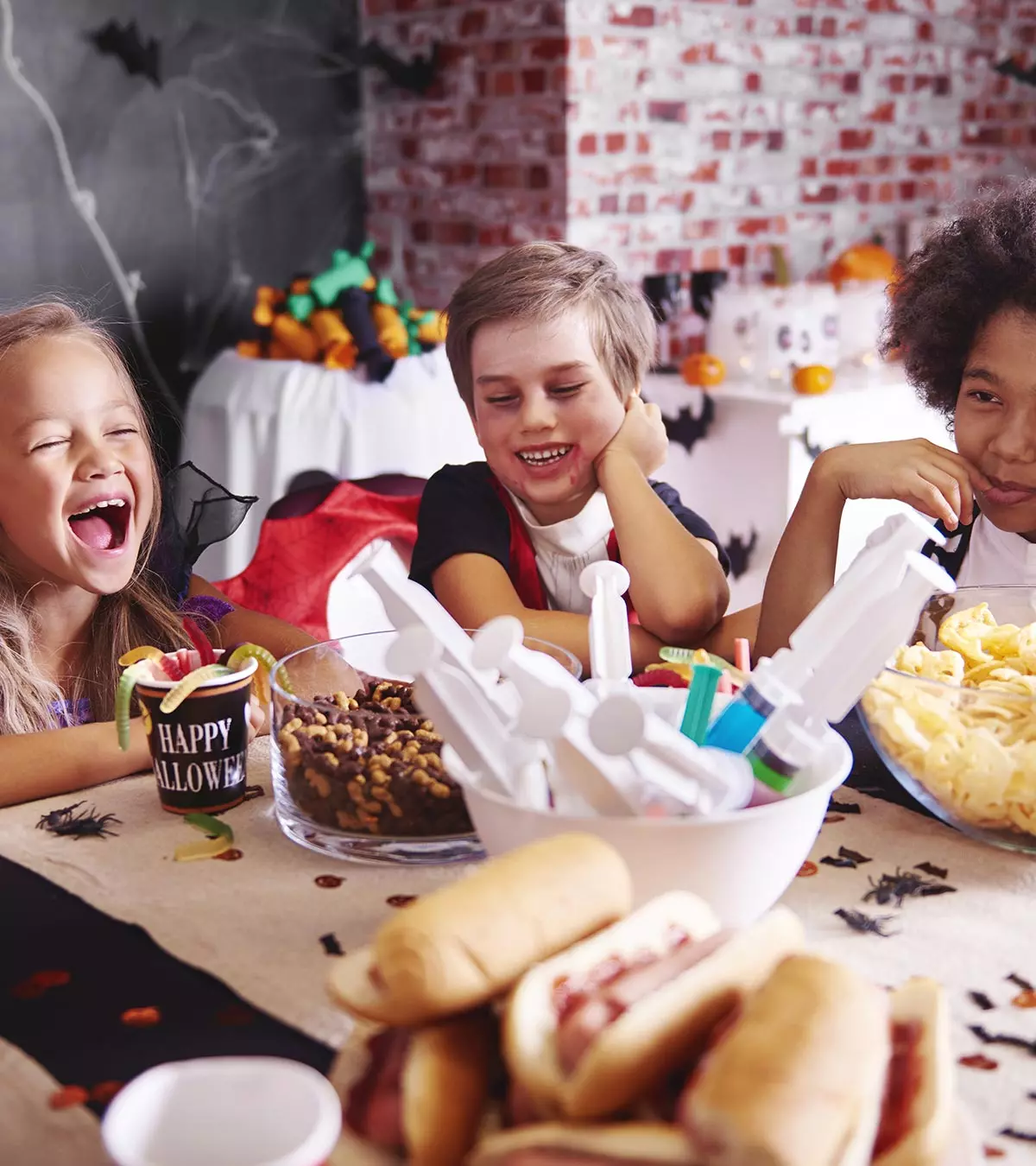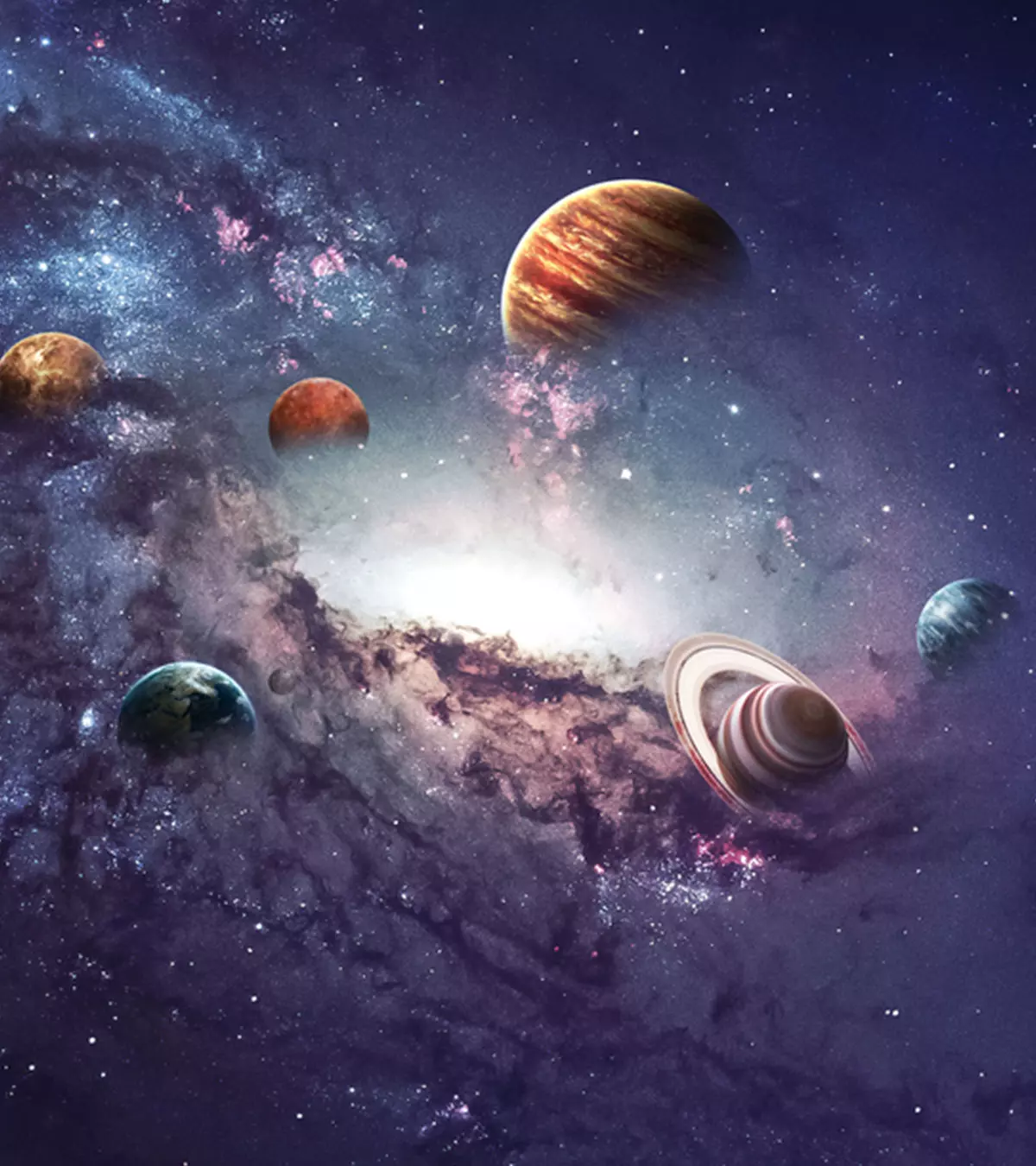
Image: ShutterStock
Most often, facts about space for kids are like being in a dreamy wonderland. Human beings of all age groups have been drawn to the stars and are fascinated by the objects in outer space. Gazing at the night sky can help you see the bright stars, the silvery moon, bright planets, and probably even the starry band of our galaxy, the milky way. The interest of human beings in studying and exploring space is not limited to just knowing the unknown but also discovering the universe and galaxies. Human beings’ interest in space has expanded scientific knowledge. The launching of the International Space StationiThe largest modular space station developed and used by several countries. ,the first moon landing, RoversiA space mission involving two Mars rovers (robotic vehicles) to explore the planet. , and the Hubble telescope are some of the early achievements of humankind in space exploration. Read this post as we bring answers to the common questions asked by kids — what is space? How big is it? What are the different objects in space? and many more.

Key Pointers
- The space is filled with gas molecules, dust, many forms of radiation, and other high-energy rays emitted by the Sun and stars.
- When astronauts are in space, they communicate with people on Earth through radio waves.
- On a space mission, astronauts consume liquid food and always wear white spacesuits.
Information About Space For Kids

Our Earth is surrounded by the atmosphere, which is nothing but layers of gasses surrounding the planet. The region where the shell of air around the Earth disappears is called outer space. The outer space is approximately 100 km above the Earth’s surface (1). As there is no air in space, there is no scattering of the sunlight to give it any color. Therefore, space appears dark.
Contrary to popular belief, space is not empty. Space between the planets and stars is filled with huge amounts of gas molecules and dust. Space is filled with all types of radiations, including ultraviolet and infrared radiations, cosmic raysiHigh energy radiation striking the Earth from outer space or the solar system. , and high energy X-rays and gamma raysiA type of electromagnetic radiation with the ability to damage living cells. emitted by the Sun and other star systems (1).
30 Space Facts For Kids
Let us learn some fun facts about space that will ignite your child’s curiosity and imagination! (2), (3), (4), (5), (6), (7), (8), (9), (10), (11), (12), (13), (14), (15), (16), (17), (18), (19), (20), (21), (22), (23), (24), (25)
- Astronauts are explorers of space. The word astronaut is derived from the Latin word Astron, meaning star. Russians call astronauts as cosmonauts. Cosmonaut is derived from the Greek word cosmos, meaning the outer world.
 Did you know?
Did you know?- Stars emit light because of burning gases in the atmosphere. Stars that seem big in a clear sky are not necessarily larger than other stars. They are closer to us.
- Astronauts consume liquid food in their space missions.
- Since astronauts cannot carry a refrigerator to space, they use a freeze-dried process. The food is frozen to a low temperature and dried in a vacuum container to eliminate moisture.
- Stars seem close, don’t they? If you were traveling at almost 12,500 miles per hour on a space shuttle, it would still take you 165,000 years to reach the closest star in our galaxy.
- Pluto was once considered to be the last planet in our solar system. It was removed from the list for being too small to be considered a planet. Hence, it was named a dwarf planet.
- In 1957, Russia launched Sputnik, the world’s first artificial satellite.

- The Halley’s Comet appears once every 75 years. It last appeared in 1986 and is expected to appear again in 2061. It forms two comet tails, a bright one made of ionized gas and a faint one made up of dust particles.
- Black holes are densely packed masses accumulated in a small area. They can pull everything within their reach — even a star or a photoniA tiny, fundamental particle of light consisting of various electromagnetic radiations (in the form of waves). of light — because of their high gravitational pull.
- Have you seen the latest photos of black holes? They are not exactly photos of black holes but their surroundings as nothing can escape the black holes.
- Space appears quiet, doesn’t it? Supernovae and Hypernovae disturb the stillness and calm in space. Supernova is the breakdown of a very old star, which causes a high-intensity blast. Hypernova is a highly active type of Supernova thought to result from an extreme core-collapse in space. Hypernova explosions are the most powerful explosions in our universe. The first Hypernova was detected in 1998.
- Astronauts in space communicate with people on Earth by using radio waves. Radio waves do not require any medium to travel.
- A full NASAiAcronym for National Aeronautics and Space Administration, a U.S. government agency involved in aeronautics and space research. space suit costs $12,000,000. The space suits are white as white can reflect any heat radiating on it.
- A year in Venus is equal to 225 Earth days, while a year in Neptune equals 164.8 Earth years.
- The name of our galaxy Milky Way is derived from the Latin term ’Via Lactea,’ meaning milky circle.
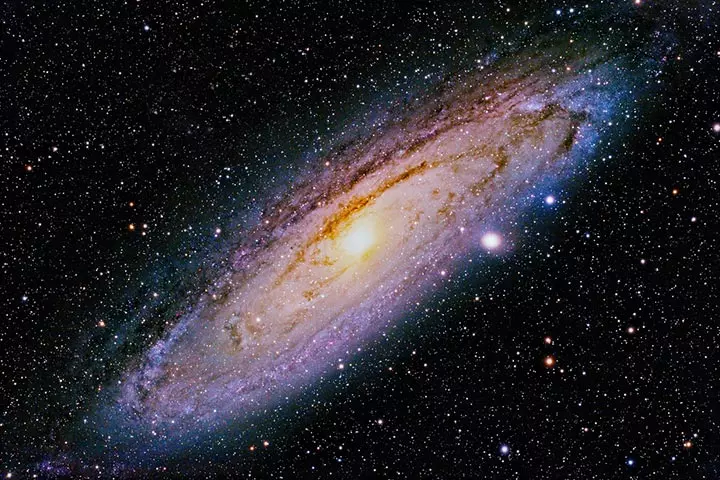
- There are over 200 billion stars in our galaxy and billions of galaxies like the Milky Way in our universe. Galaxy clusters contain thousands of galaxies and large amounts of hot plasma and dark matter.
 Trivia
Trivia- Olympus Mons on Mars is the tallest volcano in the solar system. It is three times higher than Mount Everest.
- Small asteroids hit the Earth each year, but do not cause any harm to our planet.
- High and low tides on Earth are caused by the gravitational pull of the Sun and the Moon.
- No one has ever seen the planet Neptune’s rings because they are invisible due to little solar light. These rings were discovered using scientific calculations.
- Asteroid Sedena has characteristics similar to the Earth. It is thrice as far as Neptune.
- Apollo 11 was the first mission to put humans on the moon. The mission took place in 1969.

- “That’s one small step for man, one giant leap for mankind” are the famous words of Neil Armstrong after he landed on the moon.
- Approximately 20% of the human population viewed the television broadcast of the Apollo 11 mission. It still ranks high among the most-viewed live events in history!
- A constellation is a collection of stars aligned in an imaginary form. The names of most constellations are derived from the ancient Middle Eastern, Greek, and Roman cultures.
- Scientists captured the first photo of a black hole in 2019. The black hole is said to be three million times bigger than the Earth.
- ‘Crux’ is one of the most easily distinguished constellations as seen from the Earth. It is also the smallest of all the 88 modern constellations.
- The moon has more craters on its surface than the Earth. This is because the Earth experiences minimal natural activities.
- Although Mercury is closest to the Sun, it is not the hottest. Venus observes a higher temperature than Mercury. The temperature can reach 465℃, enough to melt lead.
- Researchers believe that Jupiter has 79 moons. Of these, 53 had already been named, and 26 are yet to be named.

Light In Space Facts
To understand why there is no light in space, we need to know why there is light on the Earth. On Earth, the sun scatters its light through water droplets, dust, and dirt in our atmosphere. This atmospheric scattering allows us to witness beautiful hues during daylight hours. However, as the sun sets, darkness envelops us. In space, stars, just like the sun, should cast light, yet space appears predominantly black. The key lies in the missing atmospheric conditions. Earth’s atmosphere facilitates light scattering, revealing colors, while space, lacking a robust atmosphere, allows light to travel straightforwardly, resulting in visual darkness. The vastness of space, the movement of stars away from Earth, and the limited presence of gas and cosmic dust contribute to this cosmic blackness. So, the contrasting atmospheric dynamics between Earth and space create distinct visual phenomena (25).
Frequently Asked Questions
1. What does space smell like?
Astronauts have reported that space smells resemble gunpowder, raspberries, rum, and seared steak. The smell is not apparent when they are on their spacesuits but could smell as they remove their suits in the space shuttle. The particles may stick to the suits, and a distinctive smell emerges. Former astronaut Christ Hadfield states that space does not smell, but the particles in space might combine with air in the space shuttle to create a smell (26).
2. How cold is space?
Space has no temperature since it holds no mass. Temperature is a function of heat energy, and since space has no matter, no heat transfer can happen. Therefore the temperature is found to be 0K or absolute zero. In other words, it is 2.73 Kelvin (-454.75 Fahrenheit/-270.42 Celsius), known as the Cosmic Microwave Background (CMB) radiation that is spread throughout the universe (27).
3. Can I hear in space?
Sound does not exist in space, and you cannot hear any sounds. It is because sound travels through the vibration of particles, and as space has no particles and is only a vacuum, there is no way sound can travel, or you can hear (28).
4. Why learning about space matters?
Exploring space sparks curiosity, builds critical thinking skills, and inspires a passion for discovery. Understanding the basics of how space works can help children learn more about the science around them and how it impacts our daily lives. It can motivate children to dream big and consider future careers in science and astronomy.
Most children are quite fascinated by the space and intrigued to know more about it. If your child seems to fit this category, share these facts about space for kids to pique their curiosity. These facts explain how astronauts survive in outer space, the fascinating features of different planets, trivia about various space missions, and much more. Your child could be the next astronaut in the making, so why not feed their curiosity with facts about outer space? You can also tell them facts about the solar system to further pique their curiosity. Giving children a glimpse of the planets, satellites, and stars may inspire them to learn more about space.
Infographic: Unknown Facts About Space For Kids
The gigantic space includes several galaxies and planets, and there is still a lot unexplored about it, even by researchers. However, with several expeditions over the years and extensive studies by scientists worldwide, we know some incredible things about space today. The infographic below compiles a few space facts to share with your child, which will amaze them and leave them thinking.
Some thing wrong with infographic shortcode. please verify shortcode syntax
Illustration: Intriguing And Fun Facts About Space For Kids

Image: Stable Diffusion/MomJunction Design Team
Discover fascinating space facts about planets and the solar system in this engaging video designed specifically for kids. Perfect for young explorers and budding astronomers!
References
1. What is space?; European Space Agency
2. Astronaut vs cosmonaut; Starlust
3. Space environment;edu
4. Eating in space; National Aeronautics and Space Administration. (2019)
5. What Really is Astronaut Food?; Smithsonian National Air and Space Museum
6. How long to travel to Alpha Centauri?; EarthSky
7. Pluto dwarf planet; NASA Science
8. Sputnik and the dawn of the space age; NASA History
9. 1P/Halley; NASA Science
10. Exploring black holes: National Science Foundation
11. Dwyer, C. Scientists Find Nearest-Known Black Hole, In Distressingly Fitting Metaphor; NPR
12. Hypernova; Swinburne University of Technology
13. Cool space facts for kids; Planet for Kids
14. The Milky Way Galaxy; National Aeronautics and Space Administration
15. Space facts; The Planets
16. Asteroid or Meteor: What’s the Difference?; NASA Science
17. What causes tides?; SciJinks
18. Neptune; NASA Science
19. Sedna; The Nine Planets
20. From the moon to your living room: the apollo 11 broadcast; Science Media Museum
21. About constellations; Lunar and Planetary Institute
22. Crux Constellation; The Nine Planets.
23. Science Facts, Space Facts; Science Kids
24. Venus; European Space Agency
25. Why is space black; Planets For Kids
26. NASA Designed Perfume Captures Smell Of Outer Space; NPR org
27. THE HUMAN BODY IN SPACE: DISTINGUISHING FACT FROM FICTION; SiTN; Harvard University
28. Does sound travel faster in space?West Texas A&M University
Community Experiences
Join the conversation and become a part of our nurturing community! Share your stories, experiences, and insights to connect with fellow parents.
Read full bio of Theresa Bertuzzi
Read full bio of Sravani Rebbapragada
Read full bio of Harshita Makvana
Read full bio of Praggya Joshi







